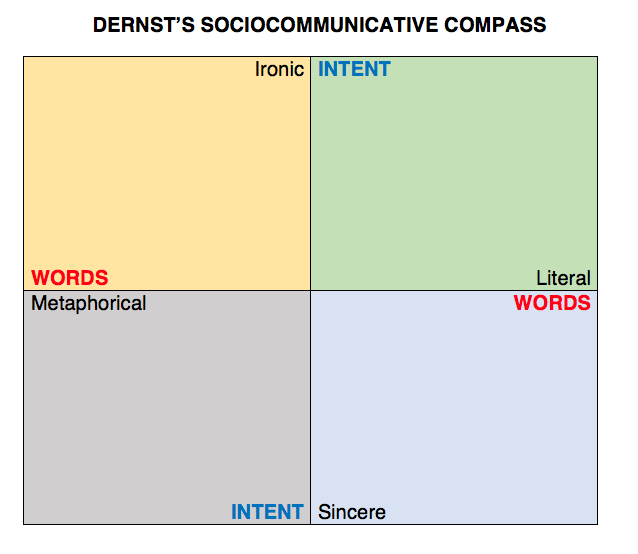I’m currently working on my dissertation prospectus, which considers the next steps Automated Essay Scoring (AES) and Natural Language Processing (NLP) technologies are taking to enable machines to read and interpret language beyond surface level textual features. The big question mark is whether machines can assess the rhetorical dimension of writing, such as the use of metaphor, analogy, and persuasion, and how those and linguistic qualities like them might best be modeled, both statistically and conceptually. Here’s a quick mock-up of a compass-style model of two aspects of language I’m constantly assessing, the actual words used and the intent behind them:

The degree of metaphor of an utterance’s words is contrasted with that of its literalness, while the orthogonal axis contrasts the degree of irony of an utterance’s intent with that of its sincerity.
Edit: An example might prove instructive. I would map the phrase “tax relief” onto the yellow square, as “ironic and metaphorical.” The metaphorical quality is obvious, since “relief” substitutes from an area other than taxation to pre-figure taxation as evil theft, which is itself not literal but also a metaphor. The irony is that those who utter the phrase “tax relief” don’t actually mean it.
